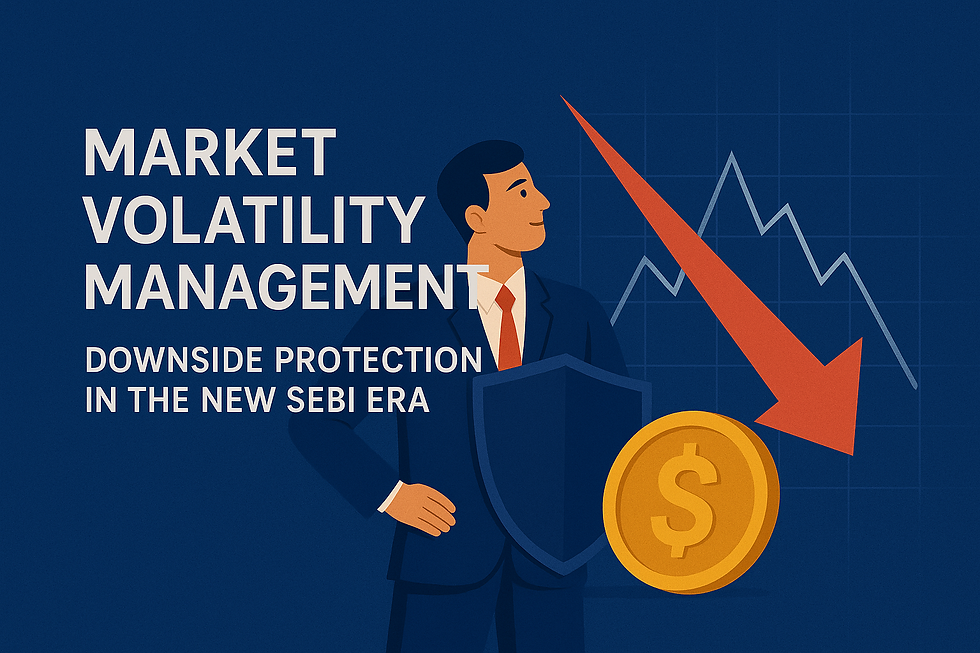India’s Banking and Microfinance Moves: RBI Signals, Reforms, and Recovery Ahead
- Tikona Capital

- Oct 14
- 3 min read
"Technology and policy are only as effective as the trust and clarity behind them." — RBI Governor Sanjay Malhotra.
A Subtle Yet Powerful Shift in India’s Monetary Policy
India’s financial landscape is witnessing a quiet but profound transformation. In its latest monetary policy meeting, the Reserve Bank of India (RBI) made headlines—not for cutting rates, but for the subtle signals and sweeping reforms it announced.
The repo rate remains unchanged at 5.5%, with a neutral stance, leaving some wondering why the RBI paused despite cooling inflation. But a closer look reveals a carefully calibrated strategy balancing domestic growth with global uncertainties.

Why RBI Hit Pause
Inflation in India has fallen sharply from 3.7% in June to 2.6% now, with core inflation steady at 4.2%. Food prices even entered deflation territory, with vegetables down 15.9% and pulses down 14.5%. Normally, such a drop might prompt rate cuts.
Yet Governor Malhotra cited three reasons for holding rates:
Transmission of Previous Cuts: Despite a 100 basis points cut since February, banks have passed on only 58 basis points on fresh loans. The RBI wants to see the full effects.
GST Rationalization: Lower GST rates could stimulate consumption while curbing prices.
Global Uncertainty: Trade wars, tariffs, and other external factors could hurt growth, necessitating flexibility for future interventions.
The subtle removal of the word “limited” from their statements hints that rate cuts may be coming—just not immediately.
Growth vs. External Headwinds
India’s Q1 growth came at 7.8%, prompting an upward revision for FY25 from 6.5% to 6.8%. But projections for H2 show moderation: Q3 at 6.4%, Q4 at 6.2%. The culprit? Trade disruptions are impacting export-driven sectors like gems, textiles, pharma, and shrimp.
Domestically, the picture is brighter. A good monsoon, strong services, steady employment, and rural demand paint an optimistic backdrop. But RBI acknowledges that external pressures cannot be ignored.
The Big Banking Reforms
The RBI’s rate decision may have stolen headlines, but its regulatory reforms could have a longer-lasting impact:
Risk-Based Deposit Insurance: Banks with sound risk management will pay lower premiums, while riskier ones pay more. This aligns incentives with prudent behavior.
Capital Market Lending: Banks can now finance corporate acquisitions, raise IPO financing limits, and remove caps on lending against listed debt securities—potentially boosting corporate liquidity.
Large Borrower Rules: Restrictions on lending to large corporates are being scrapped, allowing credit to flow more freely while concentration risk is managed via system-wide measures.
Infrastructure NBFCs: Lower risk weights on operational infra projects will make lending cheaper and more efficient.
Rupee Internationalization: Indian banks can lend in rupees for trade with Bhutan, Nepal, and Sri Lanka; new reference rates for key trading partners will facilitate direct rupee settlements, reducing dollar dependence over time.
Together, these moves mark a fundamental shift—post-NPA caution gives way to a more confident, growth-oriented banking framework.
Microfinance: From Stress to Cautious Recovery
While banks prepare for future growth, the microfinance sector is emerging from a challenging cycle. Post-pandemic lending sprees led to overleveraging, defaults, and a shrinking borrower base. The industry’s gross loan portfolio fell from ₹4.3 lakh crore in March 2024 to ₹3.5 lakh crore by June 2025, with around 13% of loans overdue beyond 90 days.
Yet, signs of stabilization are emerging:
Recovery drives are collecting overdue loans.
New loans are being issued cautiously to credit-worthy borrowers.
Industry bodies have introduced safeguards to prevent overborrowing.
Management commentary from banks and MFIs signals cautious optimism, with normalized recovery expected within the next 1–2 quarters.
However, structural challenges in rural incomes remain. Consumption has increased, but largely due to falling prices rather than higher wages. Gold loans are booming—a sign that households are relying on pledged assets rather than sustainable income.
The Takeaway
The RBI’s latest moves show a dual approach: patience on monetary policy, combined with bold structural reforms. Growth is solid but moderated by external factors, while inflation provides room to maneuver. Simultaneously, the microfinance sector is stabilizing, though caution is warranted.
Investors and stakeholders should watch closely—not just NPA figures, but indicators of rural income, agri-output, and broader credit demand. The RBI’s package is a strong signal that India’s banking system is maturing, ready to support productive credit flow and sustainable growth.
Navigating Opportunity With Prudence
At Tikona Capital Finserv, we recognize that financial markets evolve continuously. As reforms unlock new potential, careful portfolio planning and informed investment choices remain key. Whether it’s monitoring macro trends or identifying resilient sectors, a combination of vigilance and strategy is essential to thrive in a changing economic landscape.
Navigate India’s evolving financial landscape with confidence.
Partner with Tikona Capital’s experts to create a personalized investment strategy and a Custom Model Portfolio designed to capture opportunities while managing risk.
Download Tikona Capital App (Android): https://play.google.com/store/apps/details?id=com.tikona.capital.app
Download Tikona Capital App (iOS): https://apps.apple.com/in/app/tikona-capital/id6503562626










Comments